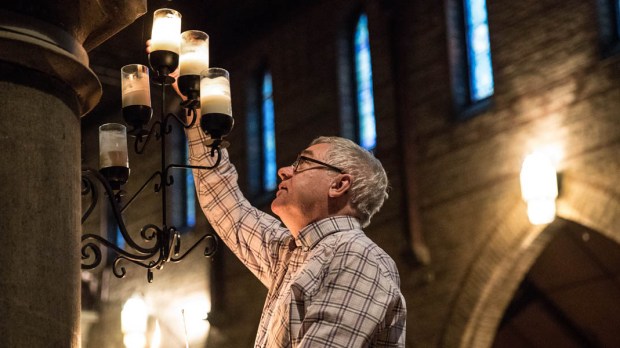When you first hear the leaves crunching in autumn, or smell wood smoke in the air on the first nippy December morning, the feeling is somehow more powerful than the sum of its parts.
That’s because of how our memories work. All the information we get from the world comes in through our five senses, and gets filed into our short-term memory center–for about 30 seconds.
The more the sensory experience gets repeated, though, the firmer it’s encoded into our long-term memory center where it can last for decades, especially if the experience is repeated yearly.
So, when you’re smelling wood smoke, your mind is experiencing that scent, added to a chain of memories, remembering every other time you’ve smelled wood smoke too. Your past and present are momentarily brought together.
This is true of all of your senses. When you hear “Carol of the Bells” for the first time each year, or light the first candle on the Advent wreath, when you feel that familiar prickle of your Christmas tree’s branches, or even buy your first peppermint hot chocolate of the season, you are, in a way, “time traveling.”
Liturgical seasons are a gift, like that.
It’s no accident how our five sense are encouraged to draw us into the season of Advent. The darkness, the candlelight, the colors, the music — year after year, repeated through the liturgy, the Church ties all of our Advents together into a continuity, so that the riches of each one feeds our understanding of the mystery.
It’s not just for dramatic effect. Sacrosanctum Concilium says that “the Church completes the formation of the faithful by means of pious practices for soul and body.”
The way our bodies are engaged in the liturgy is an essential part of how we grow in faith.
This physical involvement plays out in little ways, throughout the year. Every time we stand to hear the Gospel, we’re subtly reminded how precious it is. The bells we hear at the consecration, we hear nowhere else.
And during the especially sacred times of the year, the Church pulls out all the stops. The incense, the specific prayers, the hymns that are only sung this time of year, even the way each parish likes to decorate, these details don’t just tell us that we’re outside of Ordinary Time. They connect us back to the earliest days of the Church, filling the present with all the richness of the seasons of years past.
The way we engage our bodies in our liturgical traditions engages our faith too, cementing its truth and its joy into our memory: Do you light a wreath, or sing Advent hymns or let your children open the little cardboard doors of an Advent calendar? These traditions are so much more than nostalgic nods to the past. They are part of what gives this present season it’s sense of sacred anticipation.
If you don’t do much for Advent, I strongly encourage you to begin a simple tradition, especially something that engages your five senses. Or is there something you used to do as a child, that you can bring back into your family’s year? The continuity of the year’s sacred seasons is built on these little practices, and they engage your mind and your faith in way that nothing else can.

Read more:
Bishop Barron: What is happening at Mass?

